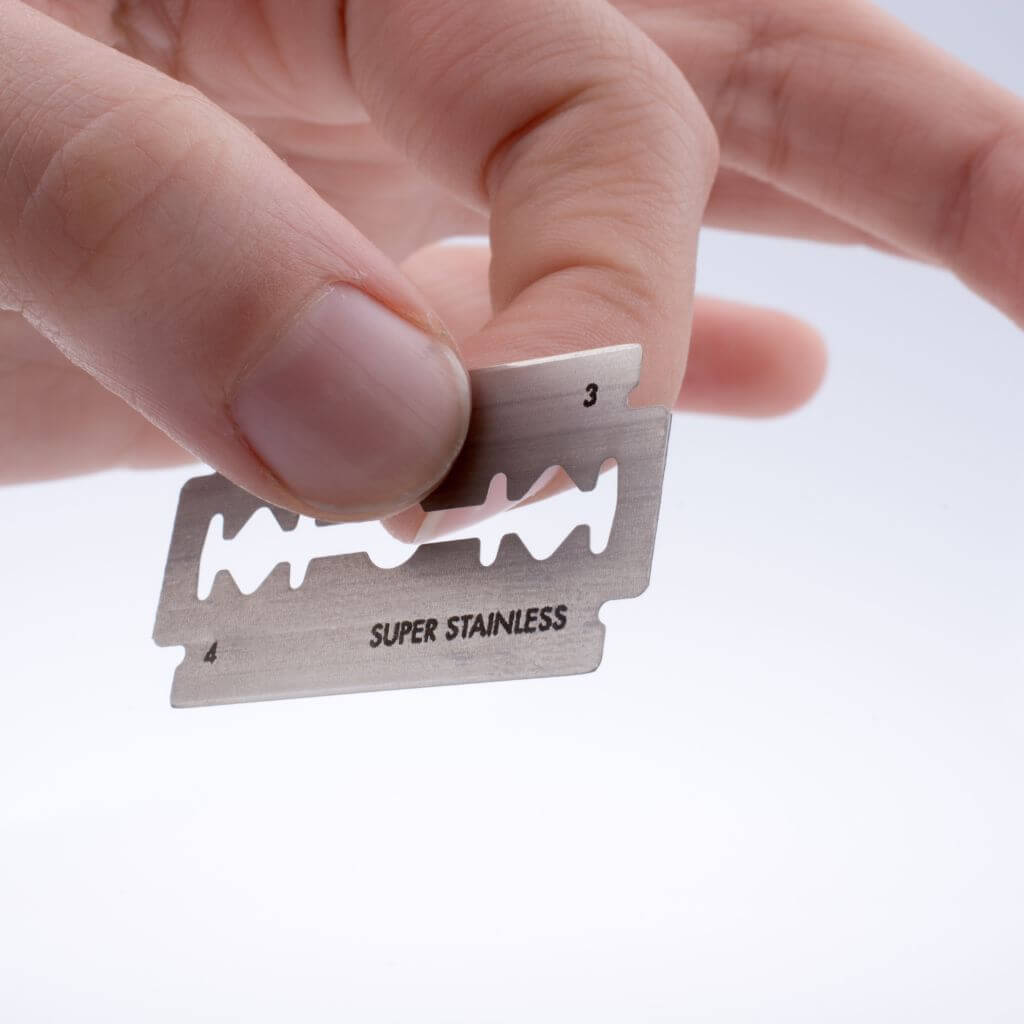
The safety razor has made a huge comeback in recent years as people move away from expensive, multi-blade plastic cartridge razors and seek a more traditional and cost-effective shaving experience. Safety razors, with their simple double edge blade design, can provide an incredibly close, comfortable shave when used correctly. And with some basic care and maintenance, a good safety razor can literally last a lifetime. In this post, we'll go over some tips and best practices to keep your safety razor in top working order for decades to come.
Choose the Right Safety Razor
Not all safety razors are created equal when it comes to build quality and materials. You'll want to choose one made from quality materials like stainless steel or brass rather than cheap plating that can wear off over time. The weight and balance of the handle is also important for control and manoeuvrability when shaving. Aim for a safety razor that has some heft to it rather than an overly lightweight design. Leaf Shave offer a pivoting head Razor which can offer a more familiar feel to the single use version and offer more protection from cuts.
Disassemble Regularly for Cleaning
Most safety razors allow you to unscrew the handle from the head to disassemble for easy cleaning (others may vary). You should do this regularly - at least once a month or after 5-6 uses. Take the razor apart and rinse out any shaving cream, hair, or debris under hot running water. Use an old toothbrush to gently scrub the razor head and get into the nooks and crannies if needed. This prevents build-up and keeps everything operating smoothly. After cleaning, carefully shake out any excess water and allow the razor to fully air dry before reassembling.
Dry Thoroughly After Each Use
It's important to fully dry your safety razor after each use to prevent any moisture build-up or corrosion on the metal surfaces. After shaving, rinse the razor head under hot water, gently shake off excess water, and carefully wipe down the handle and head with a clean towel. Make sure no water is pooling where the handle meets the head. Allow all parts to completely air dry before storing in a medicine cabinet or drawer. This simple habit keeps your razor in good working order and prevents any mildew smells.
Oil the Blade Regularly
Using a little razor blade oil is recommended to keep the metal surfaces lubricated. Just place a small drop of specialty razor oil on your fingertips and gently rub it over the top and underside of the blade. This helps it glide smoothly over your skin. Some wet shavers oil their blade after each use, but you can likely just do this weekly when cleaning your razor to condition the metal. Wipe away any excess oil and buff with a soft cloth. Mineral oil also works in a pinch. Avoid using vegetable oils which can turn rancid.
Replace the Blade Frequently
The razor blades that give safety razors their close shave can get dull over time and need regular replacement. A good rule of thumb is to change out the blade after 4-6 shaves, depending on your hair coarseness and shaving frequency. Some wet shavers flip the blade over halfway through to extend it slightly. Always discard old blades carefully. Trying to stretch out the blade lifespan too long can lead to irritation and require more passes. It's better to swap in fresh blades regularly for the most comfortable shave. Quality double edge blades can cost just 10-30 cents apiece, keeping this traditional shaving method highly affordable.
Protect the Blade
When your safety razor is not in use, the blade edge should be protected to maintain its sharpness. Most razors come with a protective cover that snaps over the head or lightly rests against the blade surface. If you remove the blade between shaves, carefully store it in a blade safe, envelope, or secure box until the next use to prevent dulling. Be extremely cautious when handling bare razor blades to avoid injuring yourself. Never leave a blade sitting out loosely on a counter or drawer. Proper blade protection retains the precise edge for smooth gliding over the skin.
Keep Drops and Dings to a Minimum
Being mindful of how you handle and store your safety razor can prevent untimely drops, dents, and dings which can affect its appearance and performance. When shaving, don't apply excess pressure - let the weight of the razor lightly glide over your skin. Gripping too tightly or pushing too hard can cause fumbles. Store it securely on a bathroom shelf or in a shaving drawer. Travel cases help protect the razor when on-the-go. Try to avoid banging around in a cluttered vanity or medicine cabinet. With regular careful use, your razor can look and function like new for many years.
Store in a Dry, Low-Moisture Environment
To prevent any mildew smells or moisture damage, be sure to keep your safety razor stored in a dry spot. Bathroom drawers and cabinets are notorious for leaks, condensation, and humidity. An ideal storage spot is in a ventilated bedroom cupboard or closet. Keep the razor in its protective case or pouch when not in use. Quickly wipe off and dry the razor if accidental water splashes or drips occur. If traveling with it, stash the razor in interior luggage pockets rather than an exterior pocket subject to rain. Keeping it dry prevents any corrosion issues down the road.
Conclusion
The safety razor deserves its recent resurgence in popularity for providing an economical yet high quality shaving experience. With vintage razors still shaving as good as new after 50+ years, it's clear this traditional grooming tool is built to last. Follow this guide of proper care tips - regular cleaning, drying, blade replacement, and handling - and your safety razor can become a lifelong companion delivering velvety smooth shaves daily, weekly, yearly for generations to come. Here's to timeless razor craftsmanship and keeping those techniques alive. May your trusted safety razor grow happily old right along with you.





